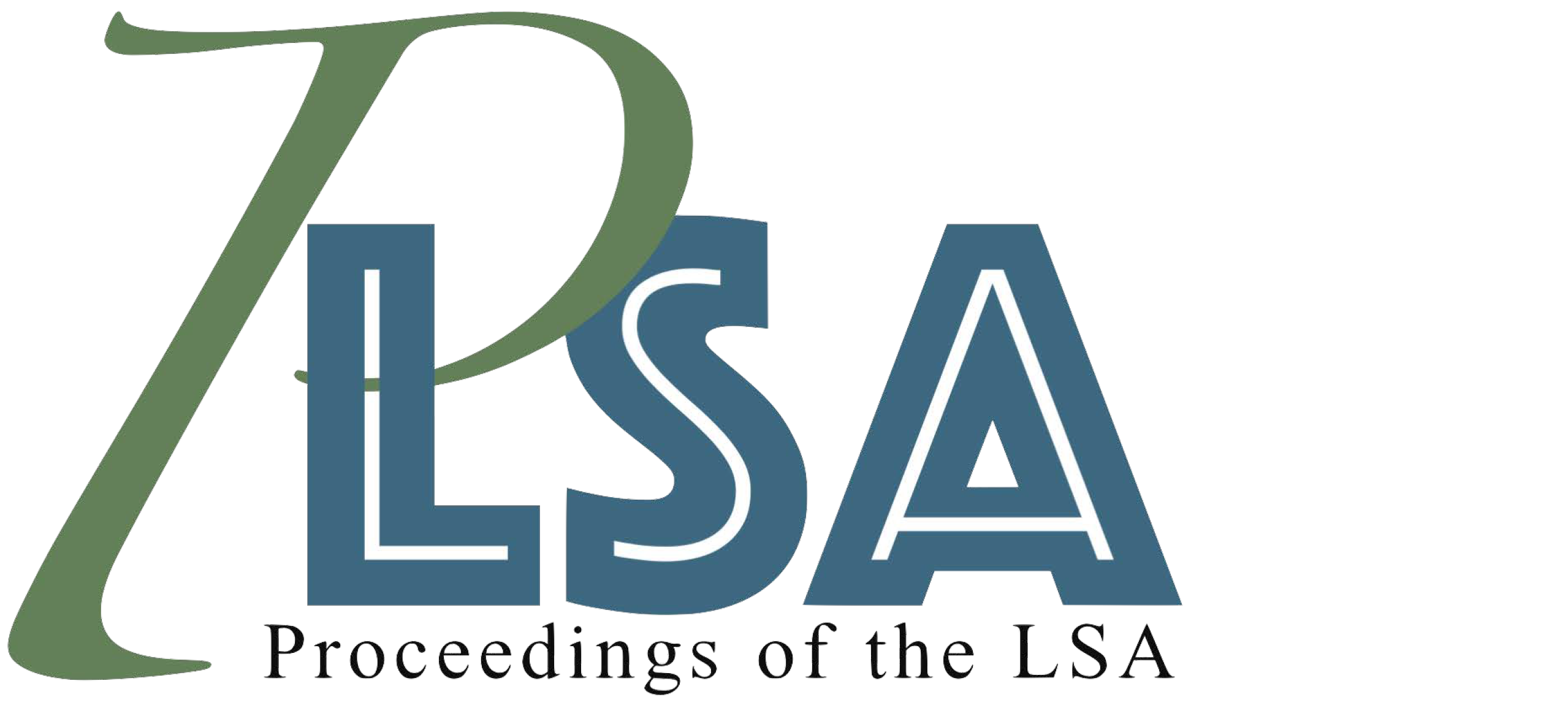Tone, viewpoint aspect, and imperative mood
DOI:
https://doi.org/10.3765/plsa.v9i1.5657Keywords:
Imperative mood, viewpoint aspect, tone, Emai, Niger-CongoAbstract
We examine the interaction between viewpoint aspect and imperative mood in an under-described and endangered Edoid language of West Africa. In Emai, tone functions both lexically and grammatically. Verbs in citation form, including bisyllabic items, are toneless. In declarative mood Emai distinguishes perfective from imperfective, with perfective assigning high tone to a verb and imperfective assigning low. Imperative mood takes perfective aspect, most clearly evident when an auxiliary or preverb precedes the verb or when the imperative is negated. In simpler imperatives, verb tone is low high. The low tone is conditioned by the juxtaposition of a subject phrase that shows a second person pronoun with high tone and a verb phrase whose initial syllable is high. Across phrasal constitutents, consecutive high tones, as they would have appeared in simpler imperatives, are prohibited. It is the verb phrase initial high syllable that lowers.
Downloads
Published
Issue
Section
License
Copyright (c) 2024 Ronald P. Schaefer, Francis O. Egbokhare

This work is licensed under a Creative Commons Attribution 4.0 International License.
Published by the LSA with permission of the author(s) under a CC BY 4.0 license.
